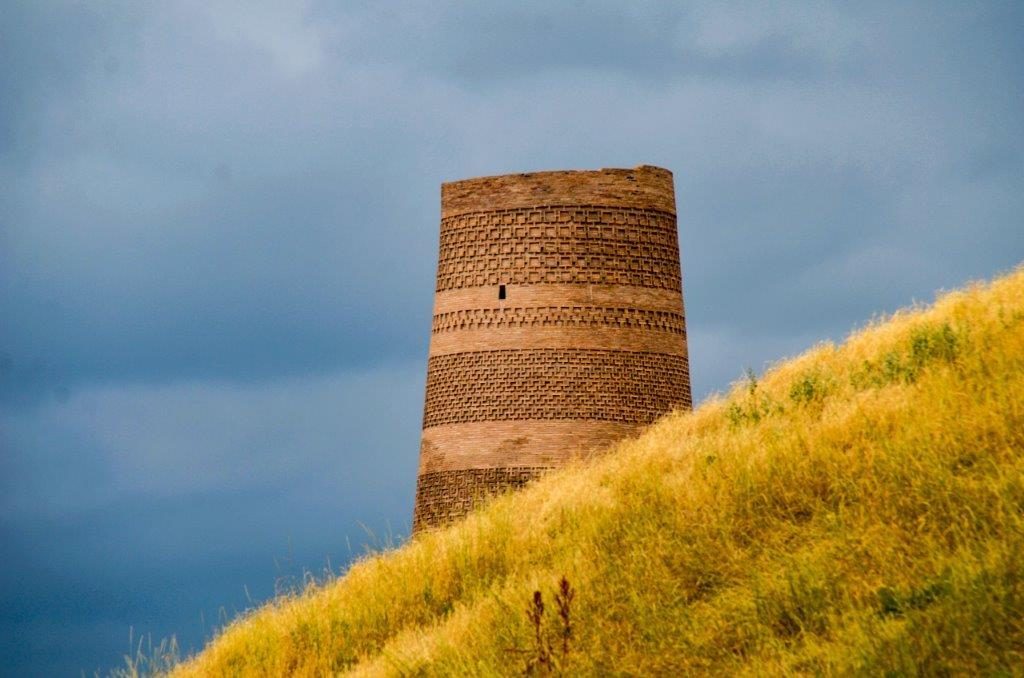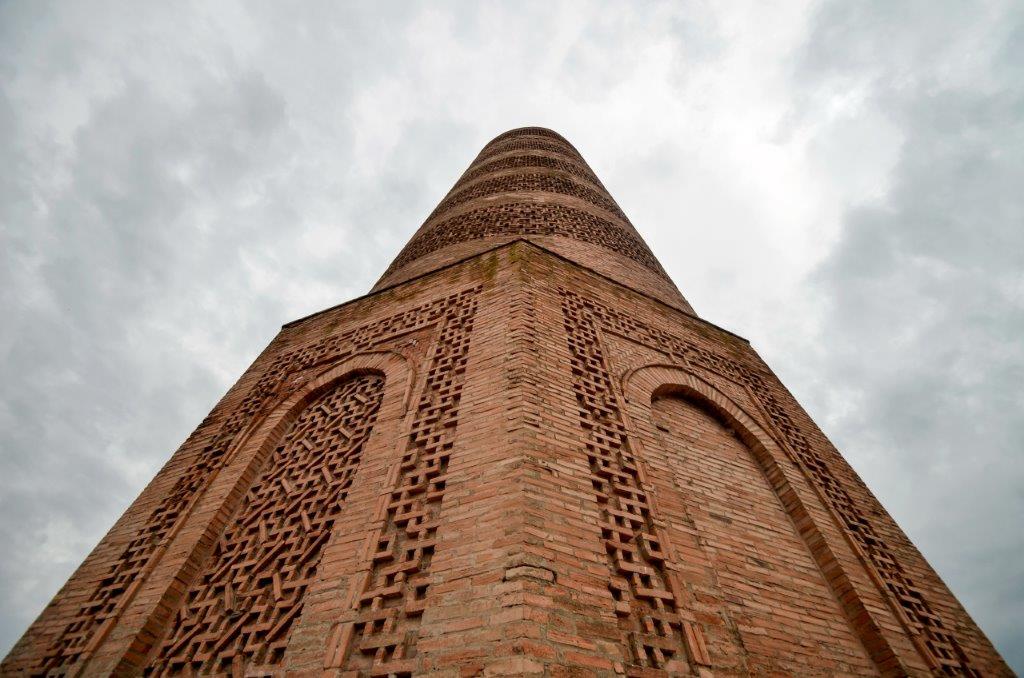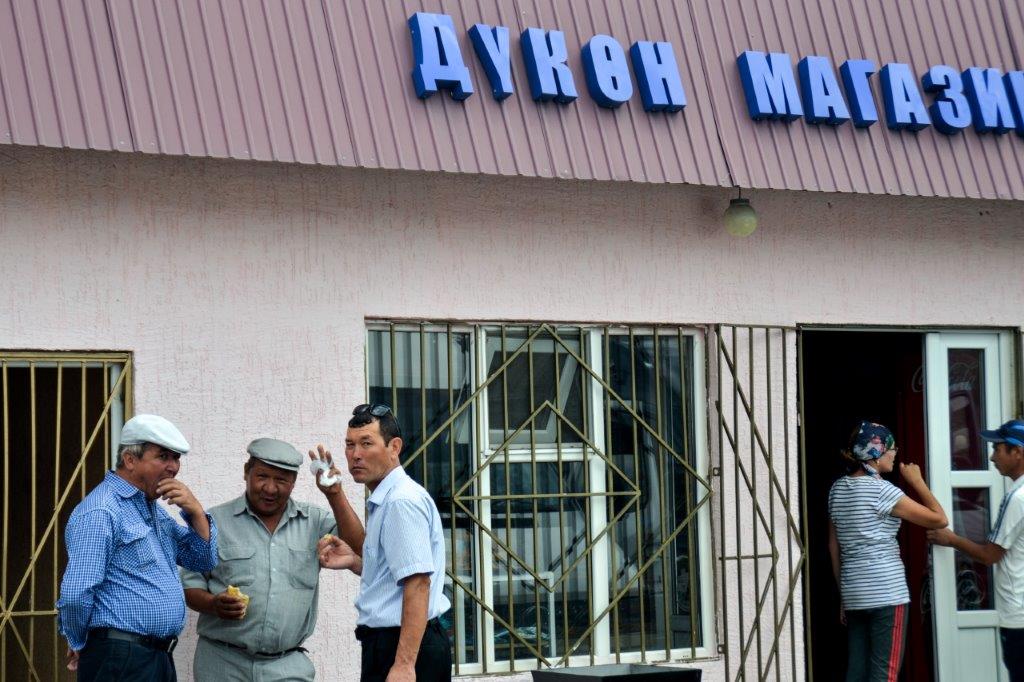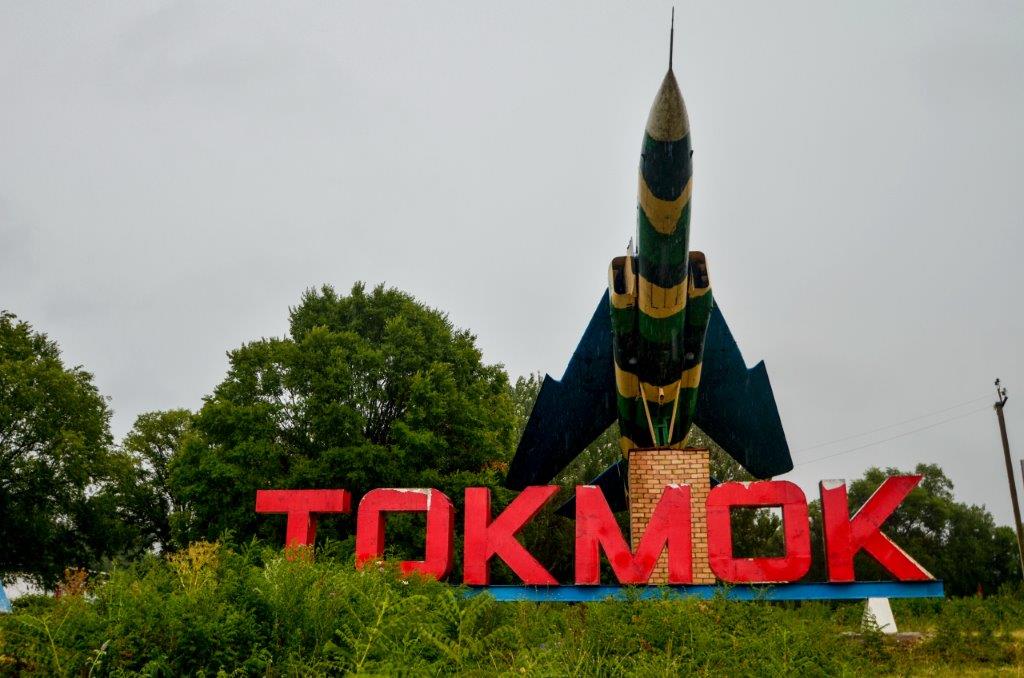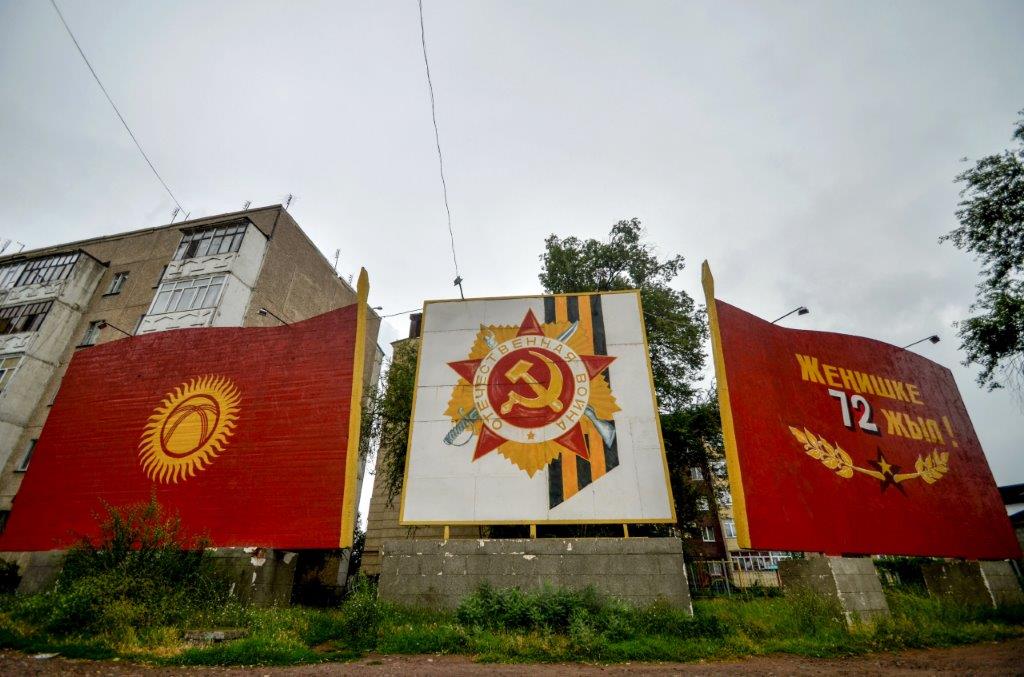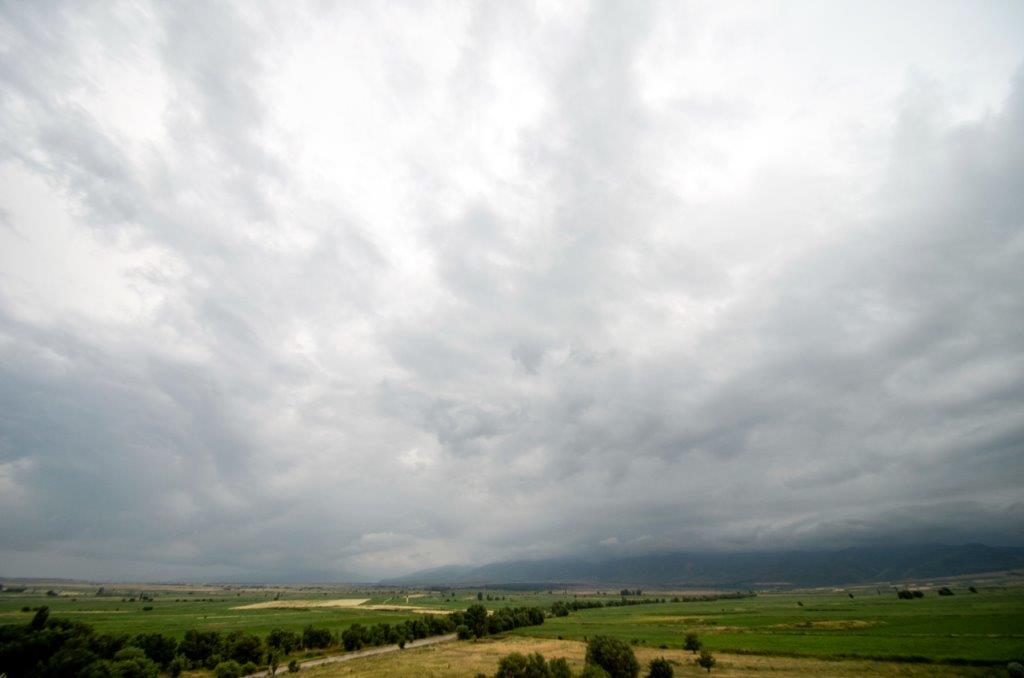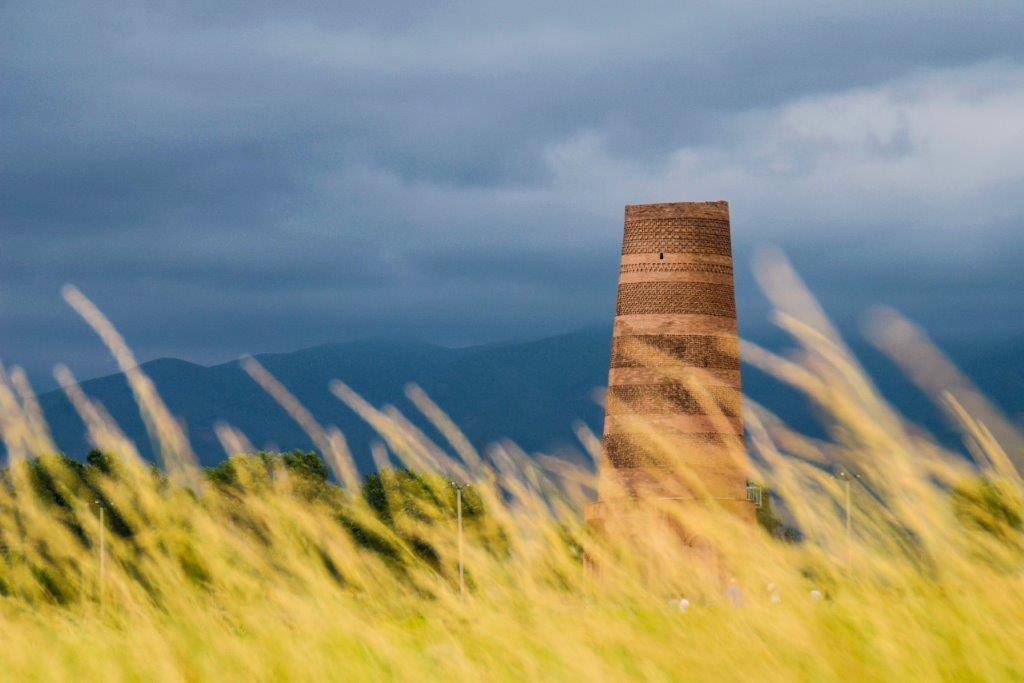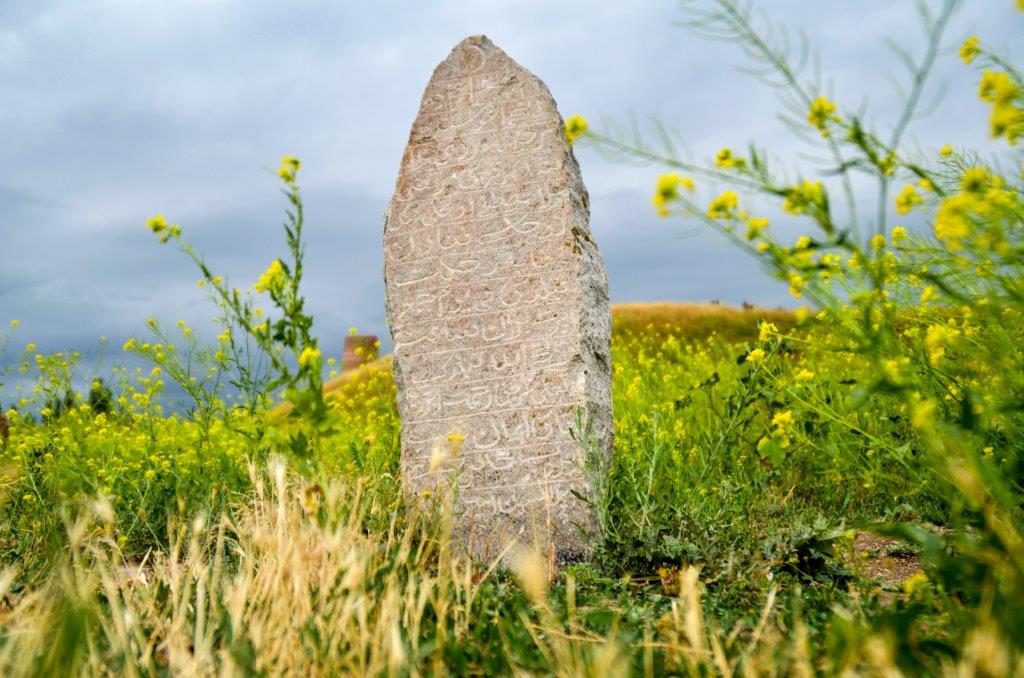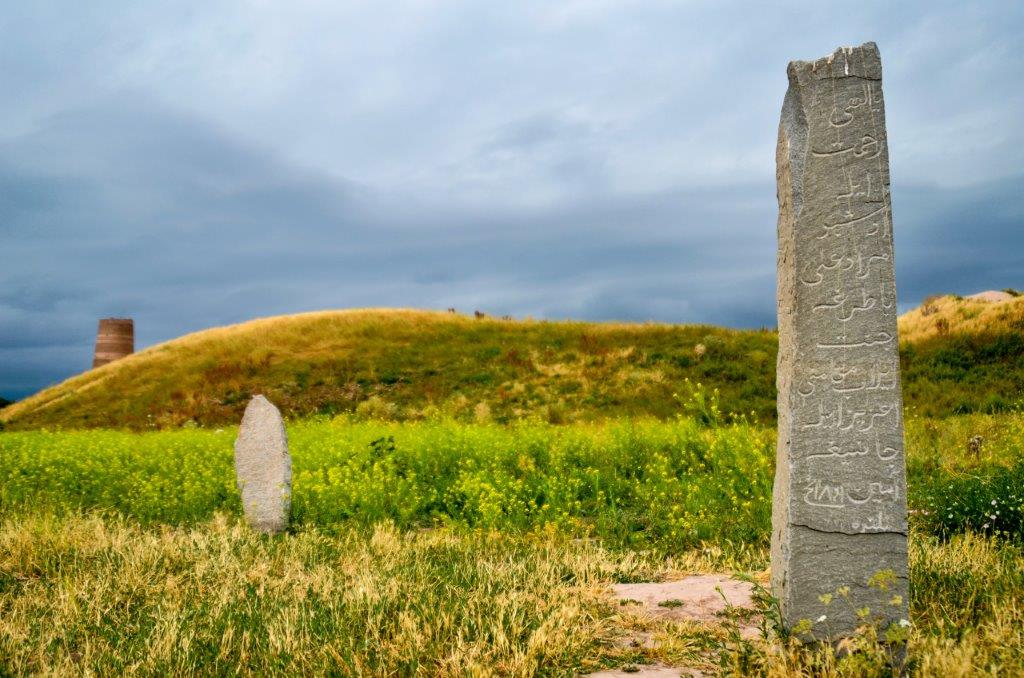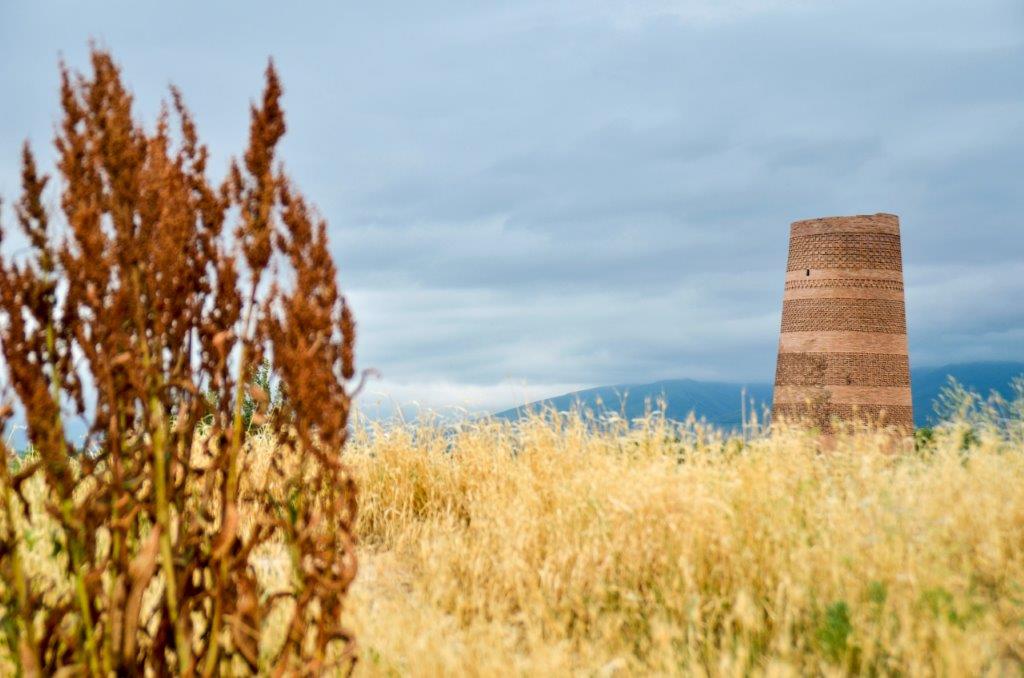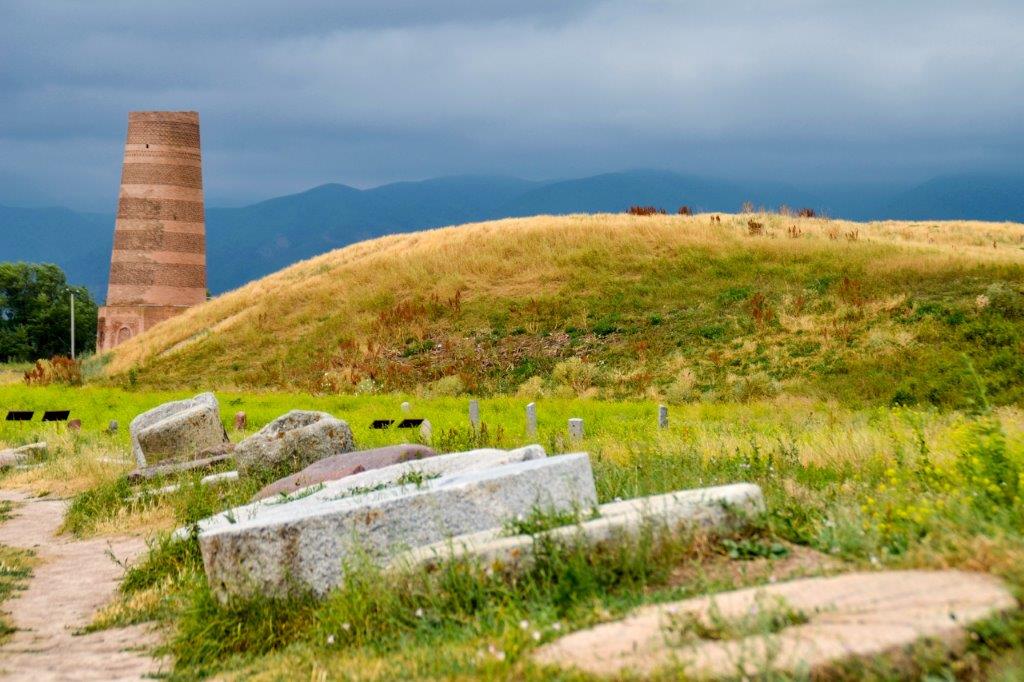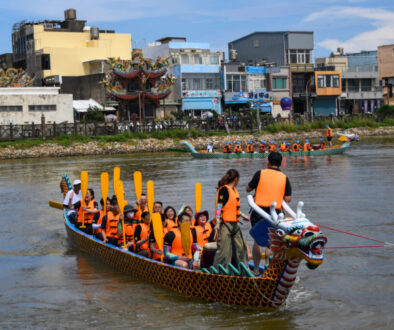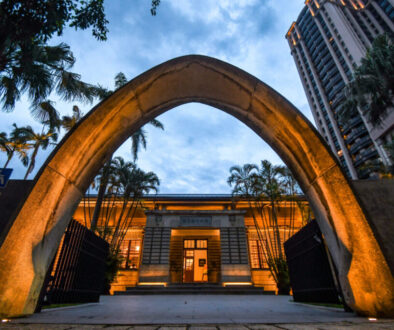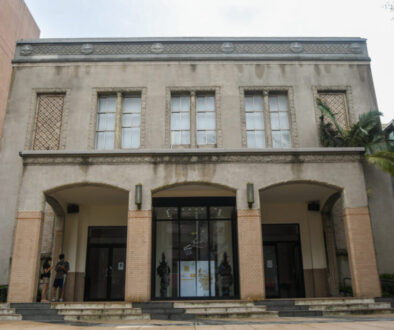Burana: The Lonely Minaret
The Pride of Kyrgyzstan
Whenever traveling to a new country, it is quite easy to find out which monument the people hold as their symbol of national pride. Just as China has the Great Wall and Egypt has the Pyramids, Kyrgyzstan has Burana tower. While this minaret is not as breathtaking as Kyrgyzstan’s vast range of snow-capped mountains, Burana still holds a special place in the hearts of the people. Even I was not completely sold on the idea of visiting Burana until I saw its proud brick spire adorning political posters and on the screens of cellphone backgrounds. There was something special about Burana which I would have to go see for myself.
Bishkek Western Bus Station
After a cramped marshrutka ride to the Western Bus Station (Западный Автовокзал) in Bishkek, I spent some time wandering the rows of minibuses. One has to listen carefully to the incoherent howling’s of the bus drivers, beckoning for passengers to step into their vehicle. Traveling to Burana is made even more difficult since it is located in a town which is a mere stopover on the way to the more popular Issyk Kul. Like a barking dog I had to repeat the town’s name repeatedly. “Tokmok? Tokmok?” As is the case with many bus stations, the ones whose duty it is to find passengers are quick to cheat and forcibly move people into their vans all for the sake of a fare. In general, the buses that are heading in the same direction are grouped together, from there it will be quite easy to negotiate a price. The cost to get to Tokmok should not cost more than 100 som (1.5 USD). Departure times fluctuate since drivers only leave when the van is full or simply when they decide on going.
Downtown Tokmok
The vast fields of green and gold farmland lined with snow-capped mountains passed by in a flash. After an hour bus ride, I was greeted by a model jet positioned over a glaring red sign reading: Tokmok. The driver dropped me off at the edge of a traffic circle in the center of town, I stepped out of the van onto the dust and watched as he continued Eastward. Downtown consisted of no more a few concrete murals displaying old Soviet propaganda to one end and a group of men huddled between their taxis and vans on the other. With there being very few travelers going to Burana, one has to haggle on the price. This goes as far as going from driver to driver to compare prices and put them in a bidding war with each other. In the end, I was given the price of 150 som one way to Burana. I hopped into the van and made my way out to the rolling pastures outside of Tokmok.
View From the Top of Burana
The trees on either side of the road lined up perfectly with the towering image of Burana. Only a few stray dogs lay strewn out lazily across the gravel in front of the rusted gates. As I made my way into the ancient remains of the begone city of Balasagun, a small framed woman came rushing out of the visitor city to catch up with me. I handed over the 150 som for the ticket and made my way to climb the minaret. After reaching the top of the new outer scaffolding of Burana, I began to climb the winding spiral staircase up to the observation deck. The interior stariway is incredibly steep and narrow. If one was to run into someone descending as you were going up, there would be no way to let the other pass. I was lucky enough to not run into any other tourists as I made my way up the passageway. On a clear day the panoramic view from the top of the tower is surely breathtaking. Unfortunately, on the day I chose to visit Burana the Kyrgyz countryside was shrouded by the clouds of an oncoming storm. While the endless green fields were beautiful, it only leaves one to imagine how much more gorgeous it could have been if the weather had cooperated.
The Ghosts of Burana
While the view from the top of Burana was a bit disappointing, the surrounding areas provided more of a showcase of different views of the minaret. Framed against a hillside, one can imagine how Burana once looked at her original height of 45m (148ft). After earthquakes and years of the tower’s bricks being taken by locals, the minaret now stands at its current height of 25m (82ft). Among the high weeds on the hillside lay the stone faces of the balbals, headstones bearing the faces and names of the ancestors of Balasagun. The Turkic forefathers of Kyrgyzstan are scattered not far from the base of Burana, each looking mournfully past the minaret towards the distant mountains.
The Return Journey
After an hour of wandering around the graves and high grass, I decided it was time to make a move back towards Tokmok. Having not paid for the driver to wait, I had no choice but to hoof it back into town. Luckily, as I was making my way down the road, a driver took pity on me and drove me back to the central roundabout. In local culture, even when hitchhiking, a tip is expected. After handing the driver around 50 som, I got out and looked for transport going back into Bishkek. From the city of Tokmok, finding a shared taxi is quite difficult. One has to wait by the side of the road, hoping that the passing vans have spaces for them. As the rain began to drizzle, I was left with no choice but to take a taxi. Surprisingly, the ride only cost about 300 som, not being all that much more than the marshrutka I took when arriving.
Is It Worth The Trip?
Burana is a fairly straightforward day-trip from Bishkek. It is important to bear in mind that it take twice the time to get to Burana than it does to actually tour the site. On a clear day the trip to Burana would surely be beautiful, viewing the majestic Tian Shan Mountains in the distance, the towering brick minaret, and the ever watchful balbals. While the ancient city of Balasagun is long gone, one can still come to take in the pride of Kyrgyzstan.
Planning a trip to Central Asia? Caravanistan is an excellent resource to help you get started!

